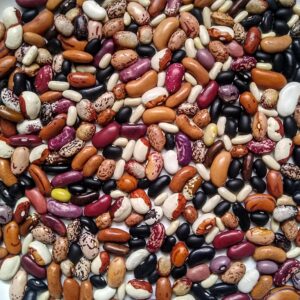
I edited this down today. A little less vitriolic as my blood pressure calmed. Also…look for it on “Grist – environmental news and commentary” – which I have joined as a contributor thanks to an invite from Tom Philpott, their food editor. I will cross post there when appropriate.
The best way to read this post is to begin with a recent press release from Texas A&M on their new Super Carrot
Second, read WIRED Magazine journalist Alexis Madrigal’s coverage of the story. Alexis praises the next generation of biotech crops. Alexis writes that, “A carrot that increases what’s known as the bioavailability of calcium could have a major impact in the marketplace.” Really???
You are correct Alexis, it could have a major impact on a totally uninformed marketplace. But not much of an impact on nutrition.
But it is likely to have an impact on genetic contamination, wasted public research dollars, and increased corporate profits.
If you had read the press release and considered the math around just how much more calcium are we getting from this new carrot, and at what costs you might have seen that this NEWS FLASH is no news at all. This is a great example of industry FLUFF. Promoting a new break through that on the surface has lots of flash and pizazz – but with scrutiny becomes a big “So?”.
The biotech industry is going to keep pushing a media blitz to get us to swallow their breakthroughs and keep their stock prices up. Unfortunately, many researchers at our public universities are their willing partners in misinformation.
Don’t believe me? Let’s look at the math:
The article states: “If you eat a serving of the modified carrot, you’d absorb 41 percent more calcium than from a regular carrot,” said Dr. Jay Morris, lead author on the paper.
The article later adds: “The daily requirement for calcium is 1,000 milligrams, and a 100 gram serving of these carrots provides only 60 milligrams, about 42 percent of which is absorbable,” he noted.
I emailed Morris and he provided this statistical summary directly from the study: “utch801BT-Roman;”>total calcium absorption per 100 g of carrots was 41% +/- utch801BT-Roman;”>2% higher in utch801BT-Italic;font-style:italic;”>sCAX1 utch801BT-Roman;”>carrots compared with control carrots (26.50 vs. 15.34 mg of Ca per 100 g) (utch801BT-Italic;font-style:italic;”>P < utch801BT-Roman;”>0.001).”
So, per carrot, there is an additional 10.66 mg of available calcium. Not bad, a statistically significant increase per carrot. BUT – is it significant in our overall dietary intake of calcium? Not even close.
As the article says, the daily RDA is 1000 milligrams. A 100 gram serving of “normal: carrots (3.5 ounces – about 1 fresh carrots, or a half dozen of those little baby carrots) gives us 15.34 mg, 1.5% of the RDA. The SUPERCARROT? It gives us about 2.6% of our daily needs.
Wow, so if we ate a bag full of these carrots a day we’d be well on our way to stopping osteoporosis!!!! Morris points this out in thre press release, “A person could not eat enough of them to get the daily requirement.” So there is no story about biotech saving us from malnutrition, but the “SuperCarrot” headlines all over the media could easily be construed as such.
If you go to the USDA web site and look for info on RDA, you’ll find tables giving bioavailable calcium content of a wide array of foods. Here.
Carrots aren’t too high on the list. Umm…and…well…a 100gram bowl of Kellogs Corn Flakes gives us 3x the total RDA….so…not to promote Kellogs, but why are we worrying about our carrots having more calcium?
Fine, lets breed for better nutritional value in all of our crops…but…let’s assess the cost, the risk. And for those of us in media (ahem, WIRED – are you media or advertising?), let’s try not to promote what is a nominal – nay – marginal – nay – totally meaningless in true impact on our daily diet as a breakthrough in biotech that will save us from osteoporosis. Instead, as media, let’s ask questions. How much are taxpayers coughing up for this research (which will get leased over to a private seed company, sold to farmers as incredibly high priced seed, and put out in fields to share its magic pollen)? What is the environmental risk? How do these carrots perform in the field against stress, and how do they taste? Is there a less expensive way to deal with poor nutrition?
Sorry to disappoint anyone – if you don’t want to get old and rickety you’re going to have to keep eating your cornflakes, or eating some cheese, or one of a thousand things with more impact than these carrots.
By the way, the organism that the gene comes from to give us this nutritional breakthrough?….Arabidopsis thaliana. In the Brassica family, a cress. Maybe we should eat more Brassicas – Kale is pretty darn high in calcium. Nah – let’s stick them brassica genes somewhere exciting – down where the sun don’t shine (where carrots grow).
I’m not even going to touch the impact of the environment in which you grow the food on its overall nutritional quality – I’ll save that for the publication of Carlo Liefert’s research.
